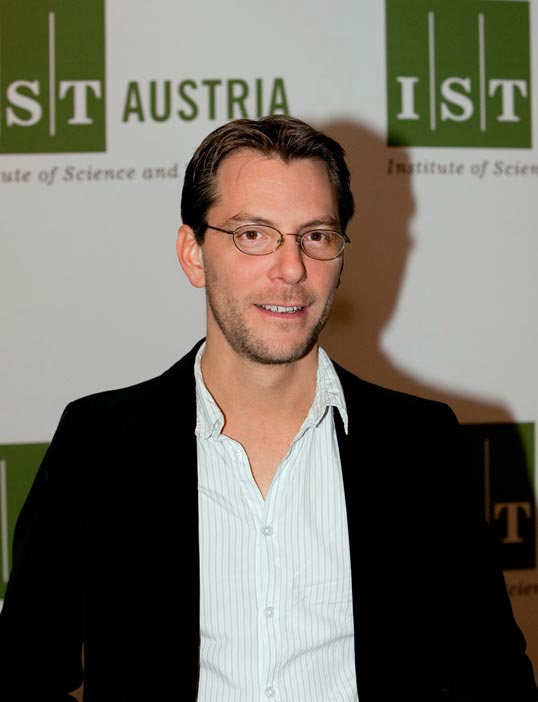February 27, 2015
Bollback to track down barriers in ERC project
Evolutionary biologist receives ERC Consolidator Grant • Now 16 out of 34 Professors at IST Austria funded by ERC

Evolutionary biologist Jonathan P. Bollback has been awarded an ERC Consolidator Grant to study the “Selective Barriers to Horizontal Gene Transfer”. IST Austria President Thomas A. Henzinger: “The ERC grant for Jon highlights the outstanding quality of researchers at IST Austria. By applying statistical modeling to biological problems this project illustrates the multidisciplinary approach which is a hallmark of research at IST Austria.” Bollback joined IST Austria in 2010. The ERC Consolidator Grant is funded with € 1.8 million for five years and will start in the summer of 2015. Thus, 16 out of 34 Professors at IST Austria are ERC grantees.
Horizontal gene transfer (HGT) is a form of genic inheritance that occurs between individuals in a population or between species rather than, as in vertical gene transfer, from parent to offspring. HGT is most prevalent in bacteria, where it is an important source for novel metabolic pathways, pathogenicity factors, and antibiotic resistance.
In spite of the importance of HGT, little is understood about the evolutionary barriers to HGT. The ERC project will outline a systematic experimental approach to elucidate factors that decide in favor or against horizontally transferred genes, by pursuing three objectives. The first is to quantify intrinsic selection acting on newly transferred genes, by experimentally transferring and expressing several hundred genes across species’ boundaries. The second objective is to examine the effect of evolutionary divergence on HGT, by determining whether genes from closely related species are more permissive to transfer than those from more divergent species. The final objective is to determine the role of the environment in shaping these selective effects. Overall, this work will provide a systematic analysis of the roles of different factors in affecting the outcomes of horizontal gene transfer. Bollback: “Understanding this process in a quantitative fashion is critical to understanding bacterial adaptation and diversity.”
In a wider context, Bollback studies three areas: experimental evolution, evolutionary genomics, and statistical phylogenetics. Microbes — viruses, bacteria, archaea, and protists — account for half of all the biomass and the majority of organismal diversity on planet Earth. Microbes gave rise to higher organisms and have left their genomic calling cards in the form of organelles, genes, and so called junk DNA. Microbes are the source of the majority of human diseases. For these reasons alone, microbes are worthy of scientific study. Yet, they are also important in another way: they are an extraordinarily powerful model system for understanding in very fine detail how evolution works. The research of Bollback’s group focuses on microbial evolution, evolutionary interactions between hosts and parasites, and the evolution of bacterial immunity. To accomplish this, the researchers use experimental evolution, population genetics, and statistical modeling.



